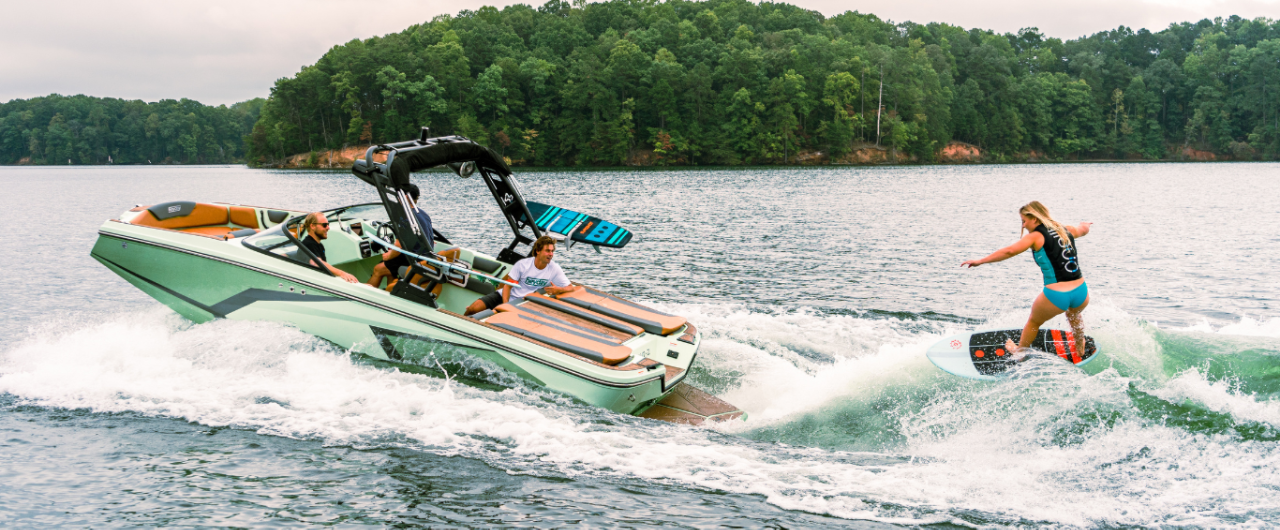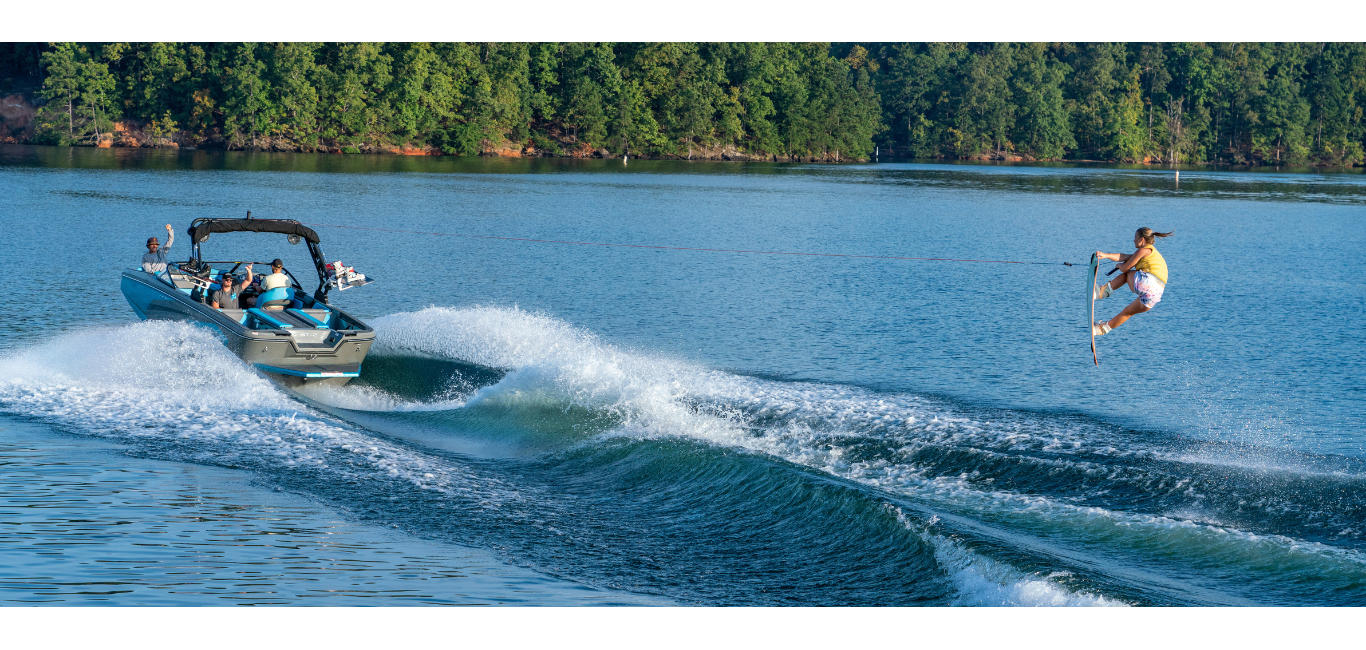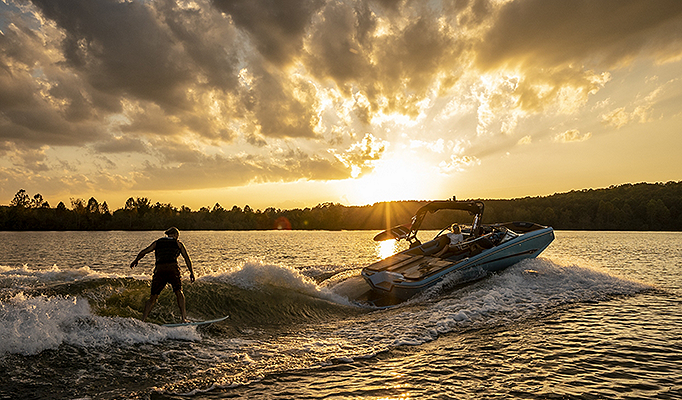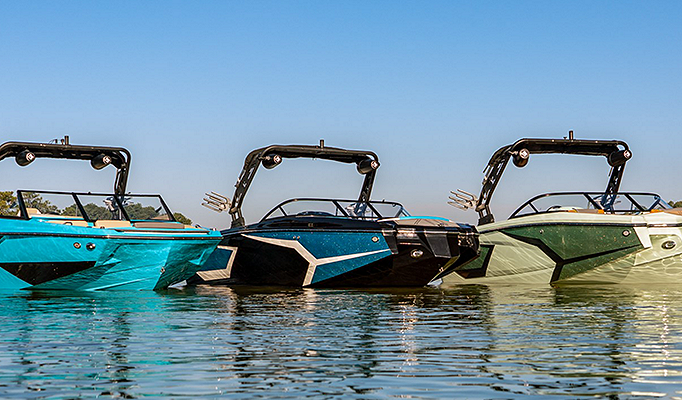Wake Sports Rules That Turn Novices Into Pros
So, you were bitten by the wake boating and wake surfing bug and now you’re ready to put your new Heyday through its paces? Follow these wake boat etiquette guidelines and nobody will know you’re just starting out.
If you’re new to wake sports, there are lots of best practices and unwritten rules to learn, and it goes far beyond how to actually wake surf. A big part of becoming accepted into the wake boarding community is how you drive the boat, how you manage your crew and how friendly and responsible you are. Let’s look at the best of wake sports advice.

Keep A Safe Distance
Where you ride and how far you are from everyone is key to common courtesy. Imagine being in a kayak, sailboat or even on a paddle board and being hit with a passing wake. It’s unpleasant at best and can be downright dangerous.
Be sure to stay at least 200 feet—that's about 2/3 of a football field—away from anything or anyone else in your surroundings. That includes, but isn’t limited to:
Docks where tied boats can bang against each other or pop a cleat off as they’re jostled
Launch ramps where boats could be tossed around as they’re about to be put in or loaded onto a trailer
Boats that are anchored and smaller boats underway
Finally, but maybe most importantly, never ride around or cut off another tow boat.
Avoid Repetitive Passes
If you find a nice stretch of water, it’s tempting to run back and forth as you wakeboard and wakes surf, but repetitive passes lead to damage. Delicate shorelines erode and docks and bulkheads suffer too. Don’t be that person who ruins the fun for everyone else—consider the expensive repairs that dock owners undertake and do your part to preserve them.
Keep Music Levels
Music is part of the fun on a wake boat, but remember, sound travels on the water. Whether you’re on a small lake surrounded by homes or at a campground early in the morning, your music is yours; it doesn’t need to be shared with everyone else.
Be Vigilant While Driving
Wake surfing is usually done at 10-12 mph which is much slower than water skiing for example. Boats traveling at all different speeds need to coexist on the same body of water so watch what other boats are doing around you and be prepared to give way—you don’t know if the other guy has even noticed you.
Look in all directions (including behind you) when turning and don’t follow another tow boat too closely because you never know when their person will fall. Follow all local navigation rules including right-of-way, speed limits and limited channel rules. Remember, no matter who has the right of way, it’s your ultimate responsibility to avoid a collision.
Additional Tips
When launching or loading at a ramp, prepare everything well ahead and then get it done quickly so you don’t tie up the ramp, especially if others are waiting. The same goes when fueling. Get in, get out.
Never throw anything overboard. If something like a plastic bag is in danger of taking flight, secure it.
It’s your responsibility as a captain to have lifejackets for everyone aboard and all other safety equipment as stipulated for your type of boat and your boating area. Always have a lookout when towing or surfing.
It’s not that hard to be a good boater. Own your wake when surfing and it will become immediately clear what is right and what is not. Smile and wave to others, take responsibility, apologize if you need to and learn for next time—it’s all part of the learning process!
You’re about to become a part of an extraordinary (not to mention welcoming) community. Follow these best wake boating tips and you’ll make new friends in no time.



